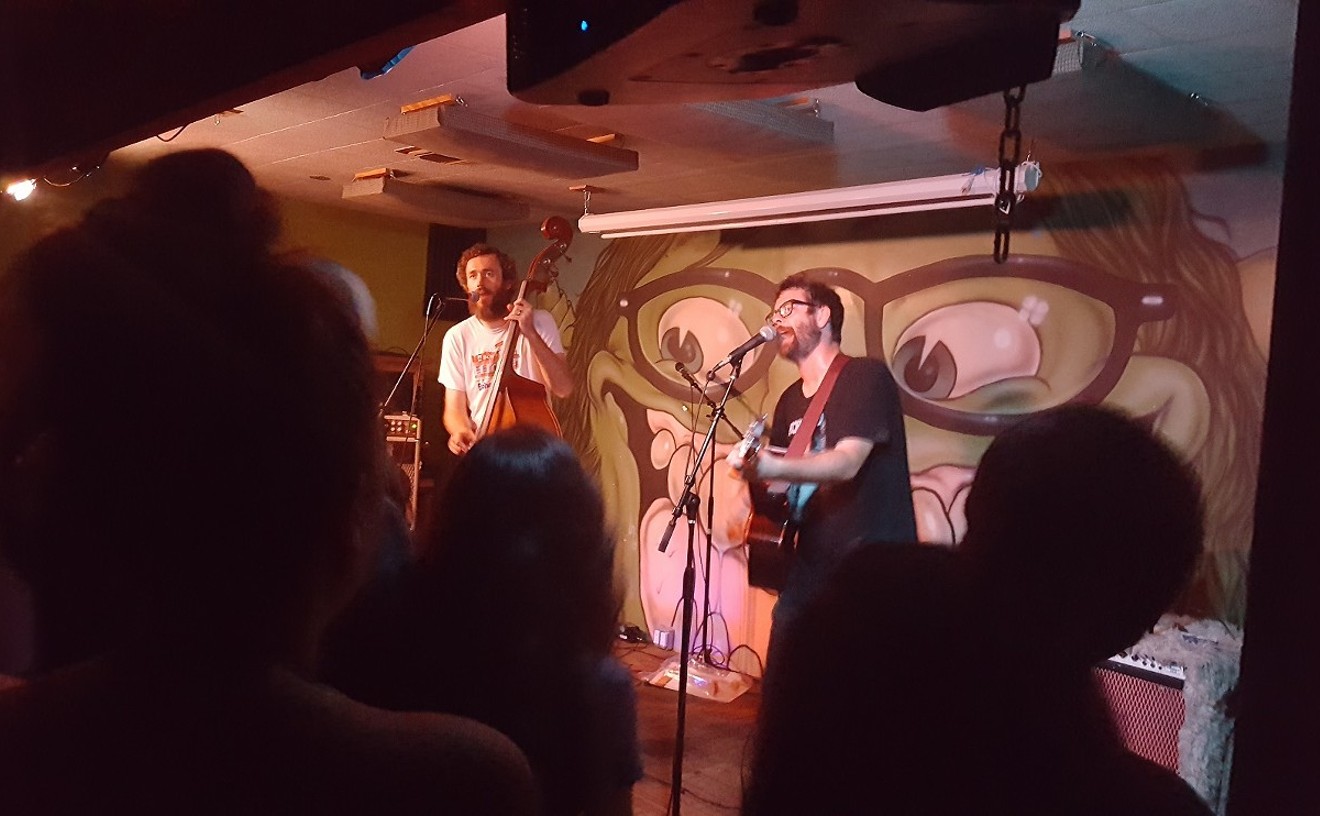Anything can happen as the economy sluggishly recovers, but Scottsdale's ArtWalk seems destined for a slow and painful demise. How apropos that Bentley Gallery is hosting Chicago-based artist Thomas Skomski's "No Better Place," an exhibit of photographs and multimedia sculptures dealing with death and decay.
Inspired in part by the death of Skomski's mother, the show invites viewers to ponder their mortality. It's a poignant exhibit that paints death as a natural and beautiful process, rather than something to be feared.
Take Sun, for example. The image is part of a series of black-and-white photos of walnuts fallen from a tree on Skomski's property, each in states of putrefaction. In this image, the tough shell of the walnut has eroded, causing the hull to splinter and crack like aging leather. The nut gleams as if cast in precious metal. Decomposing walnuts are a macabre metaphor for the transience of human flesh. Yet somehow the images are comforting — as if by seeing beauty in the process of decay, we can feel better about our inevitable deaths.
When it's our loved ones who die, comfort comes in the words of friends who say the dead are "at peace" or "in a better place." Skomski questions their assertions in Yesterday, Today and Tomorrow. A wooden roundel carved with a pair of bare footprints sits on the ground in front of a thick, black curtain. The artist's carving is exquisite. Unlike those made in sand, these footprints will outlast their maker centuries after his demise. The curtain addresses the mystery of death. When will it come? What is on the other side? I was tempted to peer behind the black drape but hesitated. The gods probably wouldn't have appreciated my curiosity.
Given the overall theme of life and death, it's no surprise that many of the pieces in this exhibit have a religious connotation. In The Hand of God, the artist's hands reach out through the crisp, clean waters of a creek. Water is the essence of life and the initiation into Christianity via baptism. The exhibit's title work confirms Skomski's Catholic upbringing with an illuminated Holy Trinity in turtle shells displayed on the upper arms of a light-box cross. On the bottom is another hand raised out of the water, this one in a gesture of defiance. Basically, it's as close to the one-finger salute as you can get without being profane. Guess we know how Skomski feels about organized religion.
These two illuminated pieces address life not as the antithesis of death but as its partner. One cannot exist without the other. Water brings life, but it can also cause death. Skomski was afraid of water for years after nearly drowning as a child. So, together with the dark purple shadows that appear in some of the photographs, there's a sinister edge to these two otherwise beatific pieces.
The religious symbolism continues in themixed-media sculpture Assumption with Ring. A clear one-gallon bottle filled with murky, red-tinged water is surrounded by a silver halo of decaying metal. A second bottle is flayed open at the bottom so that it envelops the filled bottle. The title of this piece packs a double meaning, citing both the elevation of Mary to Heaven after her death and the many presumptions of religious doctrine. The shiny halo and water reinforce the Christian interpretation, but the rusted metal and cloudy water tell us that religion is not as pure as it seems.
The exhibit succeeds in conveying the idea that, despite what religion tells us, the only certainty about death is the natural decay process. Not every piece seems to fit. In the sculpture China, a metal crosspiece casts a tarantula-shaped shadow onto a pile of uncooked rice. This is Skomski's response to the difficulty he had in dealing with the Chinese government while trying to showcase his art there. Such a political statement seems out of place with the rest of the show; unless we're going with the theme of "things Skomski would like to give the finger to," in which case this tongue-in-cheek sculpture could be the centerpiece.
Bentley Gallery's opening reception was well attended, but it's likely the end will come quickly for more Scottsdale galleries. Others will weather the recession. All will eventually die. Perhaps their owners can take solace that, if Skomski is right, even the decaying carcasses of the city's once successful businesses will have a beauty worth admiring.










